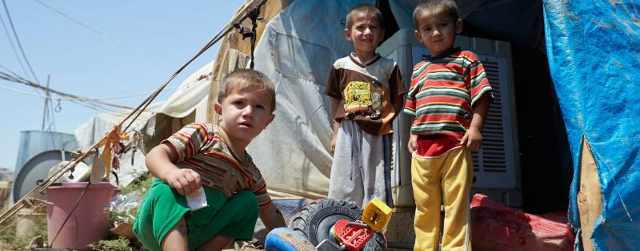Can America Protect Children in Emergencies?
Thousands of child care facilities in 27 states are not required to specifically account for infants, toddlers or children with disabilities or those with access and functional needs in their disaster preparedness plans, according to a new national survey released Tuesday by Save the Children. States have had days to prepare for Hurricane Isaac, but many disasters occur without warning, it was stated.
“The failure by states to establish basic emergency preparedness regulations for the nation’s youngest and most vulnerable children in school and child care puts many of these children at great risk should a disaster strike,” said Mark Shriver, senior VP, Save the Children’s U.S. Programs.
The report also faults states for failing to require schools to create multi-hazard, comprehensive emergency preparedness plans.
According to the report, 68 million children currently attend day care or school. Among the more than 11 million children under age five who attend day care, more than 1.5 million are less than a year old.
Called “The National Report Card on Protecting Children During Disasters,” the report assesses all 50 states and the District of Columbia on four basic disaster preparedness and safety standards for children in child care and at school. Three of the standards focus on child care facilities and the fourth is for schools.
The three child care standards call for written plans for evacuation and relocation and for family reunification following an emergency, as well as specific plans to assist children with disabilities and those with access and functional needs. The school standard calls for multi-hazard plan to handle a variety of different disasters and emergencies.
During the past five years, the report noted that the number of states that meet all four standards has increased from four in 2008 to 17 in 2012. The report also found that:
- Thirty-three states and the District of Columbia still fail to meet all four standards.
- Twenty-seven states do not require all regulated child care facilities to have a written plan that accounts for kids with disabilities and those with access or functional needs.
- Twenty states do not require all regulated child care facilities to have an evacuation and relocation plan.
- Eighteen states still do not require all regulated child care facilities to have a family reunification plan.
- Nine states still do not require K-12 schools to have a multi-hazard disaster plan that accounts for multiple types of disasters.
- Five states—Idaho, Iowa, Kansas, Michigan and Montana—fail to meet any of the preparedness standards for regulated child care facilities or schools, putting many children at risk.
“As a nation we have a moral obligation to protect the most vulnerable during disasters,” said Shriver.
To see how each state stacks up on protecting kids, and to read the full report, visit www.savethechildren.org/disaster-report.
Save the Children works to break the cycle of poverty and improve the lives of children by ensuring they have the resources they need—access to quality education, healthy foods, and opportunities to grow and develop in a nurturing environment.
In the picture above: Jeanne-Aimee De Marrais, advisor for Save the Children’s Emergencies Programs, assists a child as part of Save the Children’s response to Hurricane Katrina.




